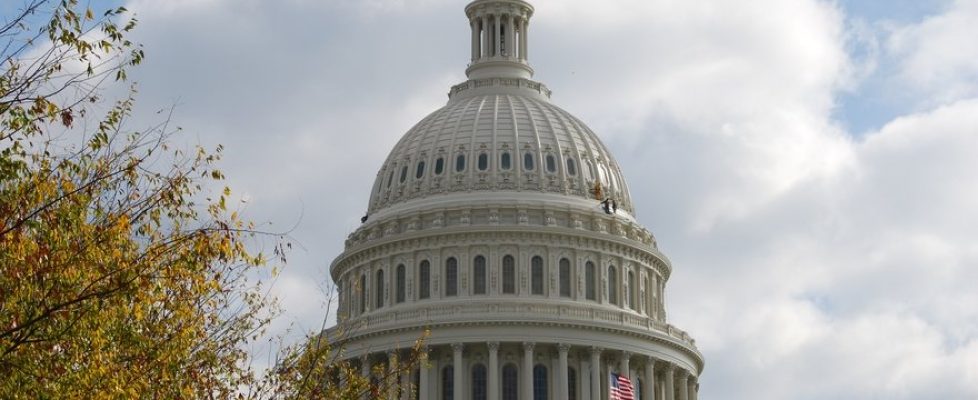Washington gets more pressure on telehealth reform
A bipartisan bill has been introduced to expand telehealth access for two years. Hundreds of advocates are calling on Congress to ensure permanent access.
Healthcare advocates have been pushing Washington to ensure wide access to telehealth continues beyond the COVID-19 pandemic, and the effort seems to be making progress.
This week, a bipartisan bill was introduced in Congress to ensure Medicare recipients have access to telehealth no matter where they live. U.S. Sens. Catherine Cortez Masto (D-Nev.) and Todd Young (R-Ind.) are the prime sponsors of the bill.
Scores of healthcare organizations have been urging President Joe Biden’s administration and Congress to guarantee wide availability of telehealth. More than 300 healthcare groups signed a letter Jan. 31 urging Congress to pass telehealth reforms.
After the COVID-19 pandemic emerged in 2020, Washington eased restrictions on telehealth as part of the public health emergency. In January, the Biden administration renewed the public health emergency for another 90 days.
Since the waivers allowing wider telehealth use are tied to the public health emergency, advocates worry about the uncertainty of continued access and have urged the administration and lawmakers to allow access to continue.
The new bill in Congress would allow the Centers for Medicare & Medicaid Services to extend Medicare payments for telehealth services for an additional two years. Those services would include substance abuse treatment.
The legislation would also authorize a study of the effectiveness of the expansion of telehealth services during the pandemic, so Congress would have more information to decide if telehealth access should be permanent.
“We’re still feeling the impacts of coronavirus, especially in older and more vulnerable populations, which is why these telehealth services must be extended,” Cortez Masto said in a statement about the bill.
Both Cortez Masto and Young touted the benefits of telehealth for residents in their states.
“As Congress evaluates which changes to make permanent, many of these flexibilities are set to expire. We should act now to ensure seniors continue to benefit from these important remote health care services,” Young said.
In their joint letter to House and Senate leaders, 336 healthcare advocacy organizations spelled out their recommendations to maintain wide access to telehealth services. The groups are asking Congress to commit to the following steps:
- Continue all telehealth waivers until Dec. 31, 2024;
- Require the government to complete evaluations of telehealth by the fall of 2023, so Congress can consider permanent telehealth reform, and;
- Pass permanent telehealth legislation in 2024.
“Keeping the telehealth waivers in place through 2024 will ensure that patients and providers will not abruptly lose access to this successful care delivery method, while giving Congress additional time to work on comprehensive telehealth reform,” Russell Branzell, president and CEO of the College of Healthcare Information Management Executives, said in a statement.
In January, the American Telemedicine Association formed a new group, ATA Action, to press Washington and state legislatures on telehealth reform.
Kyle Zebley, vice president of public policy for the ATA and executive director of ATA Action, said it’s a critical moment for Congress to act, with the added bonus of the potential for a bipartisan win.
“Now is the time to give certainty to the millions of Americans who have come to rely on virtual care and give healthcare providers the tools they need to continue to deliver uninterrupted, quality care to their patients,” Zebley said in a statement.
Telehealth use didn’t begin in 2020, but the arrival of COVID-19 made telehealth more widely used than ever before.
A federal study showed use of telehealth by Medicare beneficiaries in 2020 was 63 times higher than the previous year. Medicare reported 52.7 million telehealth visits in 2020, up from 840,000 in 2019.
While telehealth usage has expanded, some have warned about ensuring access to telehealth to underserved communities and said some gaps are emerging. A federal study showed disparities in access to telehealth, with Black, Latino and Asian American patients using video telehealth services less than white patients.
Another report from Teva Pharmaceuticals and the Morehouse School of Medicine offers more evidence of inconsistencies in access to telehealth service. That study found 36% of doctors and 49% of pharmacists said most of their patients couldn’t easily access telehealth services, due to lower incomes and a lack of computer or wi-fi access.
Advocates also say more research is needed to determine the effectiveness of telehealth visits to ensure patients are receiving high quality care.
While many patients value telehealth, a Rock Health survey in December found a dip in satisfaction with telehealth. Telehealth satisfaction remains high, but the study suggested there could be a shift in consumer sentiment, as patients began to view telehealth as an option as opposed to a necessity for some in the early days of the pandemic.
The Business Group on Health projected telehealth would remain one of the top healthcare trends of 2022, but also said virtual care would need to be integrated with in-person treatment.

